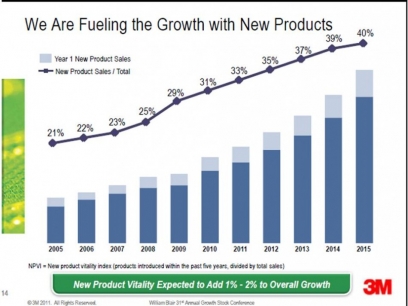Vitality Indeces and Innovation
China recently decided to offer subsidies for Chinese companies who apply for patents abroad in an effort to ensure that their Chinese technology belongs to Chinese companies and is properly protected. But the success rate of patents applied for to patent granted is only around 20%, and the success rate comparing patents applied for and those which are commercially viable is around 0.2%, so statistically speaking, any patent being filed only has a 0.04% chance of achieving commercial success!
Patents are visible register of the company’s innovation, but companies need to look at other measures like the Vitality Index, which measures the % of revenues coming from new products over N recent years. Innovation has to be linked to and derived from a deep understanding of the market, and this means that numerous actors are involved in creating Vitality. Typically this should start in Marketing, who have the responsibility for identifying needs and translating them into demands, thus driving the R&D to a clear commercial output. Similarly, great designs are worth nothing if they arrive on the market too late, too little or over-specified, or if Marketing and Sales are unable to organise and mobilise the ramp to achieve superior TTV. So whist the Vitality Index is often said to measure innovation and ability to develop products, it's really all about the ability of a company to commercialise its ideas and intellectual capital, and it needs all the parts of the process to pull together. 3M are generally recognised to be at the lead of this movement, and this is a pretty interesting slide here from the 3M presentation at William Blair31st Annual Stock conference in 2011. Otherwise my Application Note explains all about Vitality Indexes – whey they are important, how they are calculated and what your Vitality Index should be
Posted on: Thursday, July 09, 2015


